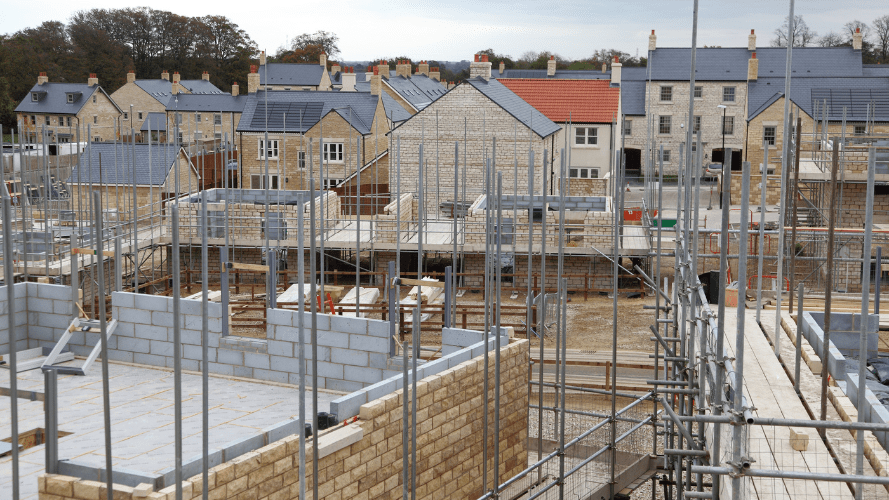Although people were divided over its actual real-life effectiveness, Levelling up was probably the flagship policy of the Boris Johnson Government.
However, during Liz Truss’ short-lived spell in Downing Street, there seemed to be a shift away from the Levelling Up agenda.
During the Conservative leadership contest last summer, the policy was barely mentioned by Truss or Rishi Sunak, and Truss seemed more interested in investment zones as an alternative to levelling up.
But now that Sunak is PM and Jeremy Hunt is Chancellor, where do they stand on levelling up? And what has happened to the investment zone plans?
Sunak reiterated the Government’s commitment to Levelling Up in his first speech as PM, signalling a revival of the policy.
The momentum behind Levelling Up Bill.... But not without its problems
In February 2022, Michael Gove set out the Government’s Levelling Up plan to transform the UK, with twelve missions to reinvigorate left behind communities. This included plans to shift more power to local leaders, increase domestic public investment in Research & Development by at least 40% across the North, Midlands, South West, Scotland, Wales, and Northern Ireland, as well as several proposals to transform housing.
Principally, Gove said the Levelling Up and Regeneration Bill would scrap the ’80/20 rule’, which leads to 80% of government funding for housing supply being directed at ‘maximum affordability areas’ – in reality, London and the South East.
Instead, much of the £1.8 billion brownfield funding would be diverted to transforming brownfield sites in the North and Midlands, with Metro Mayors allocated £120 million of this.
The White Paper also set out the plans – further fleshed out in the White Paper on Rental Reform – for homes in the PRS to meet the Decent Homes Standard for the first time and recommitted to abolishing section 21.
It proposed that home ownership would be enhanced thanks to the launching of a new £1.5 billion Levelling Up Home Building Fund. The fund would provide loans to SMEs and support the Government’s broader regeneration agenda ‘in areas that are a priority for levelling up’.
The Levelling Up and Regeneration Bill was brought to Parliament on May 11 2022 and is currently at the second reading stage in the House of Lords. It must pass various Parliamentary stages before it becomes law.
Despite refocusing on Levelling Up towards the end of 2022, it did cause issues for Sunak, with a rebellion forming against housing targets due to them being excessive and undermining local councils. In December, Michael Gove announced in a press release that the targets would be diluted.
A recommitment to Levelling Up and a ditching of investment zones
In last year’s Autumn Statement, Chancellor Jeremy Hunt insisted the Government remains committed to levelling up and spreading opportunities across all areas of the UK. Hunt confirmed that the second round of the Levelling Up Fund would allocate at least £1.7 billion to priority local infrastructure projects, with successful bids announced before the end of the year.
The Statement also reiterated the commitment to giving more local areas ‘greater power to drive regional growth and tackle local challenges’, including delivering the commitment to agree to devolution deals with all areas in England that want one by the end of this decade.
Levelling Up was noticeably mentioned far more times in Hunt’s speech than in any speech given by his short-lived predecessor, Kwasi Kwarteng, or Truss herself – with this pair seeming relatively cool on Johnson’s flagship policy.
They were far keener on the idea of Investment Zones, with the goal of driving the UK’s economic growth and drastically speeding up the delivery of new housing and commercial developments.
Government guidance at the time said Investment Zones in England would be one or more specific sites within a Mayoral Combined Authority ‘where certain planning benefits, tax incentives and wider support for local growth will be available’.
The intention was for Investment Zones to work in tandem with Freeports, with the possibility for existing Freeports to apply to become Investment Zones.
However, Hunt’s speech revealed that the Government would ‘refocus’ the Investment Zones programme, using it to ‘catalyse a limited number of the highest potential knowledge-intensive growth clusters’. One way to do this would be by leveraging local research strengths.
The Government revealed that the Department for Levelling Up, Housing and Communities will collaborate closely with mayors, devolved administrations, local authorities, businesses and other local partners to work out how best to identify and support these clusters.
The plan is to drive growth while maintaining ‘high environmental standards’. In the coming months, the first clusters will be announced, which means the existing expressions of interest will not be taken forward, the Government added.
In effect, the Investment Zones scheme has been scrapped and swallowed up into the wider Levelling Up agenda.
It’s undoubtedly the case that Sunak is more aligned with the idea of continuing the concept of levelling up, but as Johnson and his team found before them, saying you are going to level up the country and actually achieving that are two very different things.

